The security and stability of the Asia-Pacific region have become increasingly important for global peace and prosperity as a crisis around the Korean Peninsula, the Taiwan Strait or the South China Sea could escalate into an armed conflict with global implications. To address their security concerns, entities in the Asia-Pacific region are developing ballistic missiles.
A number of reports have been written about the ballistic missile capabilities of the DPRK and China. However, there are relatively fewer research papers looking into missile development in the Republic of Korea, Japan or Taiwan, China, each of which has developed or is working on the development of ballistic missiles or space launch vehicles. [1]
This report is the first in a series of reports on ballistic missile/space launch vehicle development in the Republic of Korea, Japan and Taiwan, China, with a focus on institutions that are capable of producing components that could be subject to the Missile Technology Control Regime (MTCR) [2] or the Hague Code of Conduct. [3]
Introduction
Official and authoritative information regarding the activities of Taiwan, China, related to ballistic missile development and its capabilities to produce ballistic missiles is limited. For the sake of simplicity, Taiwan, China is hereinafter referred to as "Taiwan".
It is reported that, in 1979, Taiwan secretly launched a modified US Nike Hercules surface-to-air missile to study the feasibility of converting such missiles into ballistic missiles. [4] Taiwan's first domestic ballistic missile, the Chieng Feng, made its public debut in a military parade in 1981 (Figure 1). It is generally believed that the Chieng Feng project was terminated in the 1980s without having been deployed along with a longerrange ballistic missile project codenamed Tien Ma. [5] The precise reasons for the termination of the projects remain unclear.
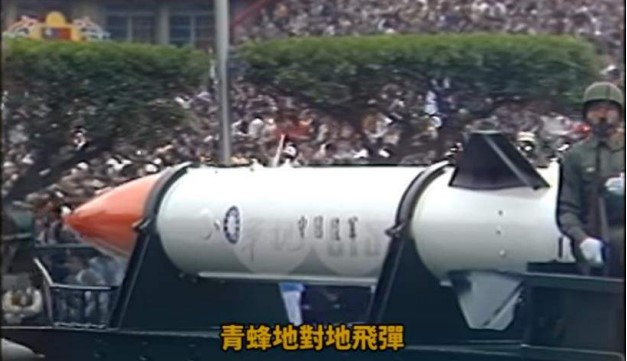
Figure 1. The Chieng Feng solid propellant, short-range ballistic missile. Image: CTS News [6]
Nowadays, Taiwanese press reports about Taiwan's current ballistic missile projects center around a short-range ballistic missile programme and a longer-range ballistic missile programme. However, Taiwan authority has never publicly acknowledged the existence of these programmes.
Drawing on publicly available open source information, such as company registration sites, official government information and Taiwanese media reports, this analysis identifies institutions in Taiwan relevant to the development of ballistic missiles and space launch vehicles, and briefly introduces the reports on the alleged ballistic missile projects.
Institutions
Three institutions in Taiwan relevant to the development of ballistic missiles/space launch vehicles have been identified:
-
The National Chung-Shan Institute of Science and Technology (NCSIST);
-
TiSPACE; and
-
The Advanced Rocket Research Center (ARRC).
Among the three institutions, NCSIST, Taiwan's main defence technology developer and weapon manufacturer, is the most likely candidate for developing indigenous ballistic missiles, should Taiwan authorize the pursuit of such a capability.
TiSPACE and ARRC are small, civilian and private start-up companies that are currently developing sounding rockets. [7] The two companies have maintained a purely civilian profile and there is no evidence to suggest that they would compete with or work together with NCSIST if Taiwan were to decide to pursue a domestic ballistic missile programme. They are included in this report because the long-term goal of both TiSPACE and ARRC is to develop their own respective space launch vehicles.
National Chung-Shan Institute of Science and Technology
Capabilities
NCSIST is capable of designing and manufacturing components or subsystems for ballistic missiles. Its products that could contribute to or facilitate the development of ballistic missiles include:
-
nosecone [8]
-
warhead [9]
-
guidance system [10]
-
solid propellant motor [11]
-
solid propellant [12]
-
flight attitude control system [14]
-
sounding rockets that, if flying a minimum energy trajectory as opposed to the highly lofted trajectory of sounding rockets, could exceed 300 km range [15]
-
target ballistic missiles that are converted from surface-to-air missiles
NCSIST also has its own research and production facilities for each of these components (Figure 2).
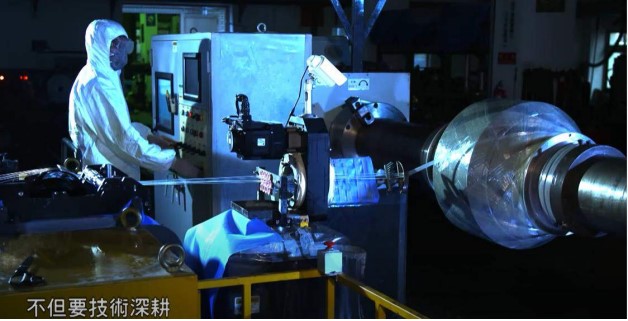
Figure 2. Filament-winding at an unknown location of NCSIST. Filament-winding is a technique commonly used to produce advanced solid propellant motor casings. Image: NCSIST [13]
Overview
NCSIST currently has about 8,600 employees, including civilians and personnel in active military duty. Chiu Kuo-Cheng, the Chairman of the Board of NCSIST, is also the current Minister of Defence of Taiwan.
NCSIST is responsible for the development of a wide range of weapon systems and has nine compounds located throughout Taiwan as depicted below in Figure 3.
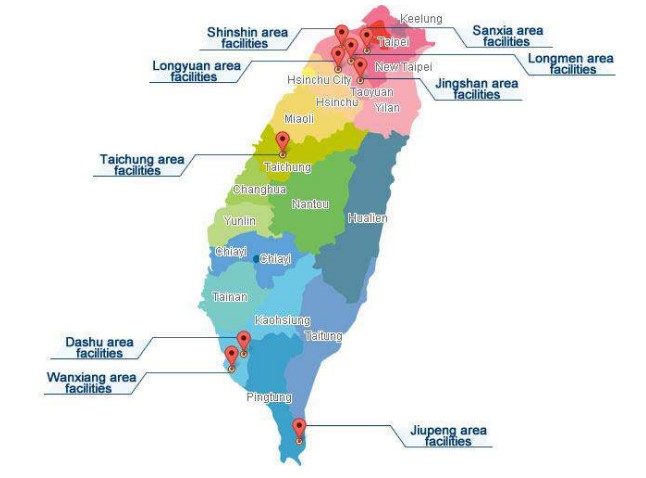
Figure 3. Locations of NCSIST compounds. Image: NCSIST [16]
Facilities
Four NCSIST facilities related to rocket and missile programmes have been identified:
-
The NCSIST Missile and Rocket Systems Research Division (in Shinshin area)
-
The NCSIST Systems Manufacturing Centre (in Sanxia area)
-
The NCSIST Dashu compound (in Dashu area)
-
The Jiupeng Base (in Jiupeng area)
The NCSIST Missile and Rocket Systems Research Division (Figure 4) is located in the Shinshin area, [17] which is also home to NCSIST headquarters. [18] The Missile and Rocket Systems Research Division is in charge of research and development (R&D) on indigenous missile systems. This division develops large calibre (up to 227 mm) multiple rocket launchers and their ammunition, air-toair missiles, surface-to-air missiles and antiship missiles.
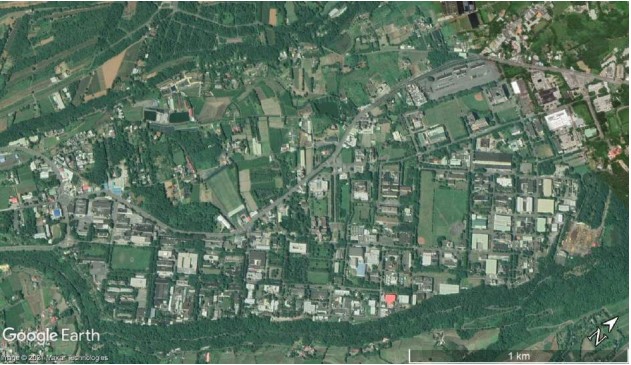
Figure 4. The Missile and Rocket Systems Research Division is also home to NCSIST headquarters. Coordinates: 24°50'56.72"N, 121°14'42.37"E. Image: Google Earth
The NCSIST Systems Manufacturing Centre (Figure 5 and 6) is situated in the Sanxia area in the city of New Taipei. [19] The Systems Manufacturing Centre is mainly responsible for the manufacturing and assembly of missile and rocket components and systems.

Figure 5. NCSIST Systems Manufacturing Centre, New Taipei City Coordinates: 24°53'54.56"N, 121°21'12.22"E. Image: Google Earth
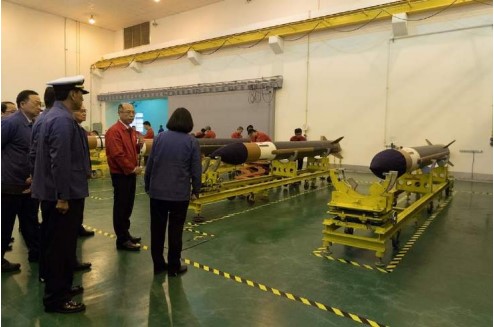
Figure 6. Inside the Tien Kung-3 surface-to-air missile production hall in NCSIST Systems Manufacturing Centre, New Taipei City. Image: Hand-out photo from Presidential Office [21]
The NCSIST Dashu compound (Figure 7) is located in the Dashu area, Kaohsiung City. [20] The Dashu compound is responsible for the Image: Hand-out photo from Presidential Office [21] development and production of solid propellant propulsion systems for rockets and missiles. About 15 km southwest of the NCSIST Dashu compound, also in Kaohsiung City, is Factory 205 (Figure 8), which is under the Armaments Bureau of the Ministry of National Defense (MND). Factory 205 is mainly in charge of the production and maintenance of solid propellant motors. [22]

Figure 7. NCSIST Dashu compound, Kaohsiung City. The on-going construction in this February 2021 image comports with media reports that part of Factory 205 will be moved into the Dashu compound. Coordinates: 22°42'3.15"N, 120°25'37.63"E. Image: Google Earth
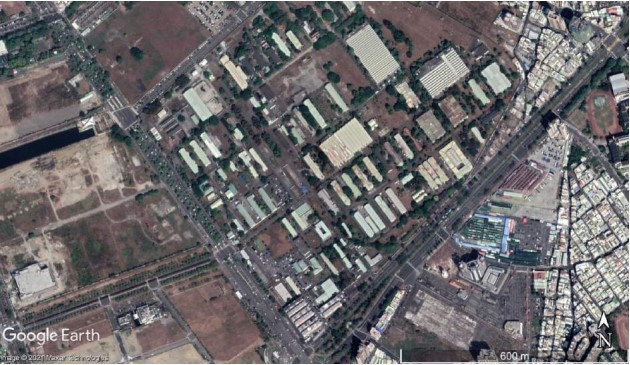
Figure 8. Factory 205, Materiel Production Centre of the Armaments Bureau of the MND. Coordinates: 22°36'3.28"N,120°19'3.27"E. Image: Google Earth
Although it is not under the jurisdiction of NCSIST, Factory 205 maintains a close working relationship with NCSIST. Part of Factory 205 will be moved into the NCSIST Dashu compound after completion of new construction work that is targeted to be finished in 2022. [23]
The Jiupeng Base (Figure 9) attracts the most media attention because it is the main venue from which NCSIST and the armed forces of Taiwan launch large caliber multiple rocket launcher rounds, land-based anti-ship missiles, long-range surface-to-air missiles (Figure 10) and sounding rockets. The base is over six km long from north to south and about three km wide from west to east. About 300 employees work at this site. [24] The entire base is closely guarded. Prior to live artillery and missile firing activities of the Taiwanese armed forces and NCSIST, the Fisheries Agency of the Council of Agriculture issues notices to fishermen [25] (Figure 11) to prevent civilian vessels entering the test zone. However, it is often difficult to determine the type of missiles being launched, because civilians and journalists are only able to observe test launch activities from outside the base.
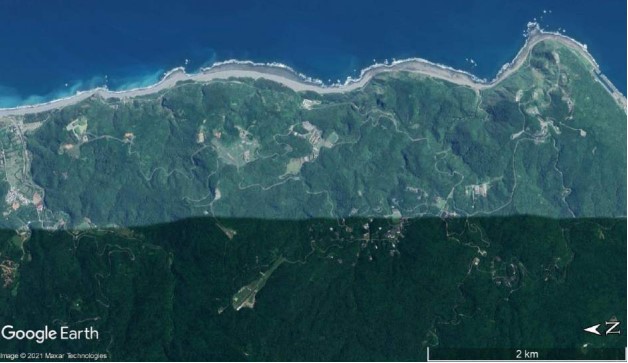
Figure 9. Jiupeng Base. Coordinates: 22° 9'56.44"N, 120°52'48.23"E. Image: Google Earth
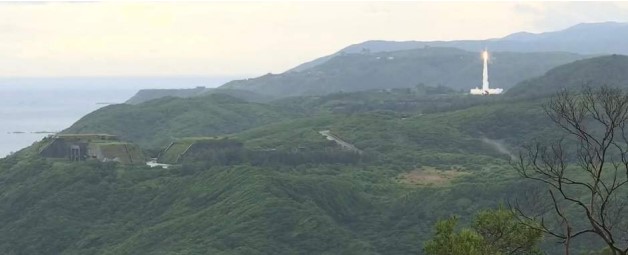
Figure 10. A Tien Kung-3 missile is launched on 15 July 2020 from Jiupeng Base during the annual Han Kuang Exercise in 2020. Image: SET News [27]
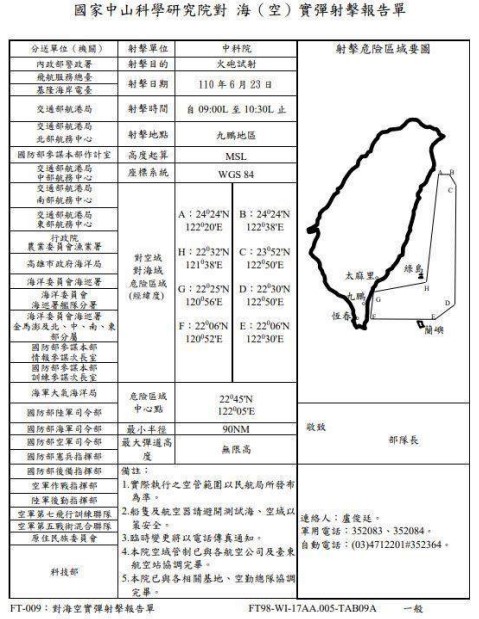
Figure 11. A notice to fishermen regarding a NCSIST weapon test on 23 June 2021, issued on 7 June 2021. Source: Fisheries Agency, Council of Agriculture [28]
For ballistic missile interception tests, the target missiles have to be fired from outside the Jiupeng Base. Most of the target missiles were previously fired from the Chenggong Township, 115 km northeast of the Jiuping test site (Figure 12). [26]
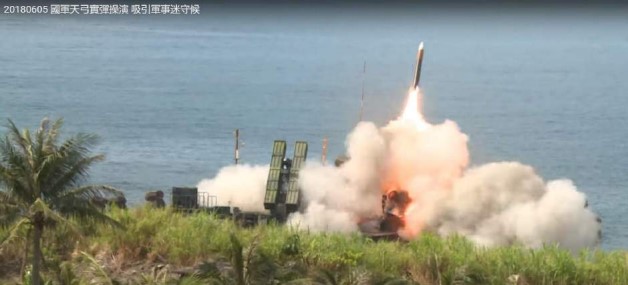
Figure 12. A target missile based on the Tien Kung-2 SAM fired on 5 June 2018 from Chenggong township, Taitung county. Image: Taitung Cable TV [29]
Alleged Ballistic Missile Projects
As described in the introduction, Taiwan's historical ballistic missile programmes have been shrouded in secrecy. Local media reports regarding the development of the alleged ballistic missile systems are highly speculative and often sensationalized. Based on a comprehensive review of Taiwanese press reports, the current allegations center around two possible ballistic missile programmes, namely a short-range ballistic missile and a longer-range ballistic missile. However, it is worth noting that NCSIST has never publicly acknowledged the existence of these two programmes.
Short-Range Ballistic Missiles
NCSIST has conducted multiple missile interception tests involving using ballistic missiles as targets. In those tests, the target missiles are converted from NCSIST’s Tien Kung-2 long-range surface-to-air missile (SAM). The use of the Tien Kung-2 SAM as target ballistic missiles demonstrated NCSIST’s ability to produce solid propellant, short-range ballistic missiles.
Several Taiwanese media outlets claimed that, in preparation for a possible military operation from mainland China during Taiwan's first direct presidential election in 1996, some ballistic missiles, [30] codenamed Tien Kung-2B or Tien Kung-2S, [31] converted by NCSIST from the Tien Kung-2 SAM, were deployed at an offshore island.
In May 2019, Taiwan's UpMedia reported that a project called "Tien-e" was initiated to upgrade the Tien Kung-2B ballistic missiles. The report claimed that the production of the Tien Kung-2B lasted from 1996 to 2006, and that the Tien-e upgrade aimed to improve the accuracy and increase the destructive power of the existing missiles. [32] Media reports in the early 2000s also mentioned a "Tien Chi" missile, which is allegedly a Tien Kung-2- based ballistic missile with a range of only 100 km. [33] The name "Tien Chi" has not appeared in Taiwanese media since then.
In the annual budget plans for 2020, the Taiwan MND awarded NCSIST a contract for "ground-to-ground missile life-extension and inspection". [34] This contract was interpreted by some Taiwanese media as being for lifeextension of the ballistic missiles based on the Tien Kung SAM. [35] However, In the annual budget plans for 2019 and 2021, a reference to the "Hsiung Sheng missile life-extension and inspection" was used instead. [36] Judging by the naming convention of the Taiwanese armed forces, Hsiung Sheng (雄昇) is more likely to be a codename for the land-attack cruise missile based on the Hsiung Feng (雄風) anti-ship cruise missile, rather than a ballistic missile based on the Tien Kung (天弓) SAM.
There are a few reports that NCSIST has plans to develop for the RT-2000 multiple rocket launchers (1) a short-range ballistic missile [37] and (2) a new, guided rocket with a range of at least 100 km. [38] Reportedly, the new rocket for the RT-2000 multiple rocket launcher is based on a scaled down design of the airframe of the Tien Kung SAM. [39] However, a later report by a different media outlet states that, in light of the US arms sale to Taiwan of 64 Army Tactical Missile Systems M57 Unitary Missiles, [40] the short-range ballistic missile project had been cancelled and NCSIST was now focusing on increasing the accuracy of the RT-2000 multiple rocket launcher. [41]
Pursuant to a request by the National Space Organization of the National Applied Research Laboratories, NCSIST also produced sounding rockets by adding a 500 mm diameter solid propellant rocket booster to the Tien Kung SAM rocket motor. [42] A total of ten sounding rockets were launched between 1998 and 2014 by the National Space Organization and NCSIST. [43] These sounding rockets are unguided, spin-stabilized rockets used for scientific research purposes. [44] There have been no indications that these sounding rockets will play any land-attack role. However, NCSIST’s sounding rockets are sometimes mistaken by Taiwanese media as land-attack missiles.
Longer-Range Ballistic Missile
During a review conference convened by the Legislative Yuan (Taiwan's legislative body) on 25 March 2021, NCSIST Vice President Leng Jin-xu stated that Taiwan currently had deployed one indigenous long-range, groundbased weapon system (most likely the Hsiung Feng-2E cruise missile [45]) to attack land targets and that there were three other longrange land attack weapon systems under research and development. [46] What the latter three projects are remains unclear. [47] The possibility that one of the three on-going long range land attack weapons under development is a ballistic missile cannot be ruled out.
News reports on longer-range ballistic programmes are more speculative than the alleged ballistic missiles based on the Tien Kung SAMs. It is reported by UpMedia that the MND, pursuant to a request by the National Space Organization, awarded NCSIST a contract to develop a small space launch vehicle capable of putting a 50 to 200 kg payload into a 500 km high sun synchronized orbit. The project codename is said to be Kirin (or Qilin). [48]
In February 2019, UpMedia reported that a colonel working for NCSIST left a paper document about the Kirin project in the basket of a shared bike. The document was later returned to NCSIST. [49] NCSIST issued a press release, stating that the Kirin project was part of its basic engineering and technology development work, but did not reveal the nature of the Kirin project. [50]
It was subsequently reported that the Kirin project had been renamed Qilai as a consequence of the document loss incident. Media reports also claimed that a military project, called Chi Feng, based on technologies of the Qilai, was created in 2021 with the aim of developing a 1,000 km range ballistic missile. [51]
However, it is worth noting that NCSIST has repeatedly dismissed news reports of indegenious offensive missile development, especially those of UpMedia. [52]
TiSPACE
Capabilities
TiSPACE, a privately owned small start-up company founded in 2016, has produced at least one advanced sounding rocket. The longterm goal of TiSPACE is to produce a hybrid rocket (N2O and rubber/HTPB as oxidizer and fuel) called "Hapith V" (Figure 13), which is capable of putting 350 kg payload into a 600 to 700 km high sun synchronized orbit. [54]

Figure 13. Hapith V is TiSpace's planned space launch vehicle. Image: TiSpace [53]
Overview
TiSPACE terminated its only attempt to date to launch a sounding rocket, the Hapith I (Figure 14 and 15), on 13 February 2020 due to bad weather. Since then, the company has encountered difficulties in securing the launch location in Nantien, Daren township, Taitung County, due to local villagers’ protests and land use regulations. Recent news reported that the company is looking for launch locations outside Taiwan. [57] On 23 August 2021, the Australian government approved the launch of Hapith I from the newly licensed Whalers Way Orbital Launch Complex in South Australia. The launch is scheduled to take place in late 2021. [58]

Figure 14. The Hapith I is still listed as an ongoing sounding rocket project of the National Space Organization. Image: National Space Organization [55]
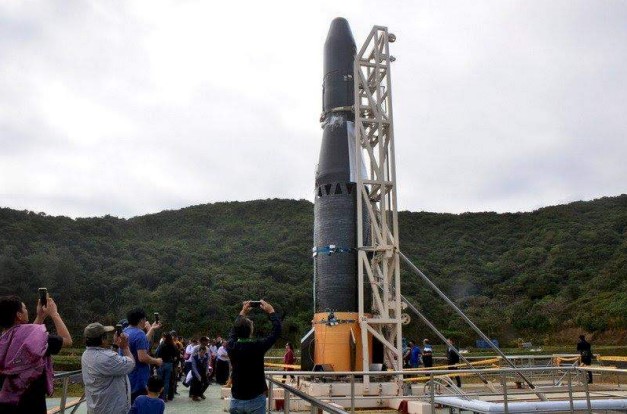
Figure 15. Hapith I at the launch pad in Nantien, Taitung County. The launch was cancelled in the final moment on 13 February 2020. Image: Radio Taiwan International [56]
Facilities
The headquarters of TiSPACE are located in Jhunan Township, Miaoli County (Figure 16). Its engine test site is situated at Tai'an Township, Miaoli County. The company’s planned launch site is in Nantien, Taitung County (Figure 17).
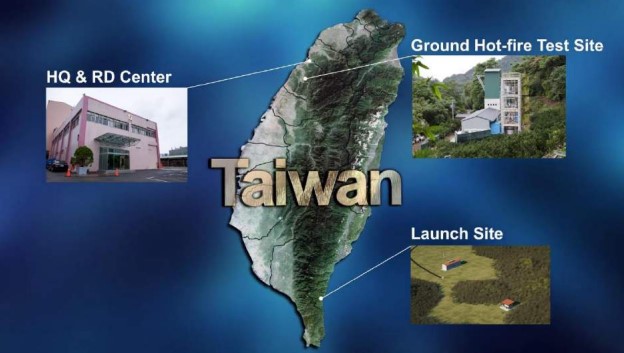
Figure 16. Locations of TiSpace. Image: TiSpace [59]
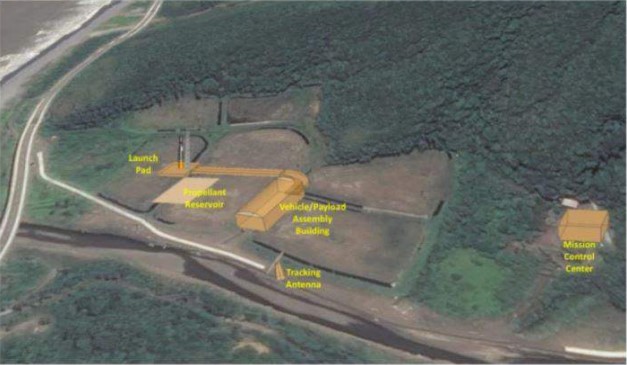
Figure 17. Layout of the TiSPACE launch site in Nantien, Taitung County. The company has not been able to secure this location for space launch purposes. Image: TiSPACE [60]
Advanced Rocket Research Center
Capabilities
The Advanced Rocket Research Center (ARRC), a research organization founded by corporate and private donations, is capable of developing advanced sounding rockets. The ARRC’s long term goal is to eventually develop a space launch vehicle. [61]
Overview
As of August 2021, ARRC’s work is focused on the development of the HTTP-3A sounding rocket, which is named after the locations of the four universities involved in this project:
-
National Chiao Tung University (in Hsinchu)
-
National Taipei University of Technology (in Taipei)
-
National Cheng Kung University (in Tainan)
-
National Pingtung University of Science and Technology (in Pintung)
One of the participating universities, the National Cheng Kung University, started researching sounding rockets in 2000 and has gained significant experience in developing sounding rockets since then. [62]
The HTTP-3A, also a hybrid rocket, has a designed lift-off thrust of over 1 ton-force; its payload is said to reach an altitude of over 100 km. [63] There is no evidence to suggest that the Taiwanese military is interested in converting the rockets of the ARRC into ballistic missiles.
Facilities
The ARRC is based at the National Chiao Tung University in Hsinchu.
Summary of Findings
NCSIST is the key institution responsible for developing domestic missile systems in Taiwan. As evidenced by NCSIST's target ballistic missiles, sounding rockets and other products that could contribute to ballistic missile development, NCSIST has the ability to produce solid propellant, short-range ballistic missiles. NCSIST is also reportedly developing a space launch vehicle, which could, in theory, facilitate the development of longer-range ballistic missiles.
TiSPACE and the ARRC also have plans to develop their own space launch vehicles. However, the development of these two startup companies has been modest. As of August 2021, the two companies are still at the stage of developing advanced sounding rockets.
[1] Ballistic missiles are guided rockets used to attack targets on the surface. They can be of a single stage or multistage design depending on their range. Space launch vehicles are guided and staged rockets that put payloads into orbits. The latter are important for purposes of this paper since space launch vehicles could, in theory, be converted into ballistic missiles.
[2] The MTCR seeks to limit the risks of the proliferation of weapons of mass destruction by controlling exports of goods and technologies that could make a contribution to delivery systems (other than manned aircraft) for such weapons, and to limit the risk of controlled items and their technology falling into the hands of terrorist groups and individuals. The MTCR Guidelines, including the Annex to the Guidelines, form the basis for controlling transfers to any destination beyond the Government's jurisdiction or control of all delivery systems (other than manned aircraft) capable of delivering weapons of mass destruction, and of equipment and technology relevant to missiles whose performance in terms of payload and range exceeds stated parameters. The MTCR Guidelines define the purpose of the MTCR and provide the overall structure and rules to guide the member countries and those adhering unilaterally to the Guidelines. The Equipment and Technology Annex is designed to assist in implementing export controls on MTCR Annex items.
[3] The Hague Code of Conduct against Ballistic Missile Proliferation (HCOC) is the result of efforts of the international community to internationally regulate ballistic missiles capable of carrying weapons of mass destruction. By subscribing to the HCoC, members voluntarily commit themselves politically to provide pre-launch notifications (PLNs) on ballistic missile and space-launch vehicle launches (SLVs) and test flights. Subscribing States also commit themselves to submit an annual declaration (AD) of their country's policies on ballistic missiles and space-launch vehicles.
[4] Kao Chih-yang, 兩岸史話-神祕的「神箭19之5號演習」[Cross-Strait history: the secretive Arrow 19 Number 5 Exercise], Want Daily, 21 July 2012, available at: https://www.chinatimes.com/newspapers/20120721001112-260301?chdtv
[5] 台灣飛彈發展史 三彈一機奠定研發基礎 [Three missiles and one aircraft formed the foundation of Taiwan's missile development], Apple Online, 27 February 2019, available at: https://tw.appledaily.com/politics/20190227/5KJNRHFM3NY5MVTHJSECWXRSYE/; A rumour claimed that before the termination, a total of 12 Tien Ma missiles had been produced and secretly deployed. Such rumour could be regarded as an urban legend. See: Lai Xing-jun, Hsueh Wen-hao, 揭秘台復仇武器!天馬飛彈傳可攜核彈頭 12枚藏中央山脈 [Revealing Taiwan's revenge weapon! 12 nuclear capable Tien-Ma missiles are hiding in the central mountain range!], SET News, 5 July 2016, available at: https://www.setn.com/News.aspx?NewsID=161713
[6] 1981 R.O.C National Day Military Parade (Taiwan, 1981.10.10), CTS News, available at: https://www.youtube.com/watch?v=JiHiUGf4AD8
[7] A sounding rocket is "any unmanned rocket that is designed to probe atmospheric conditions and structure at heights (80–160 km [50–100 miles]) beyond the reach of airplanes and balloons but impractical to explore by means of artificial satellites. A sounding rocket usually has a vertical trajectory as it travels through the upper atmosphere carrying a payload of scientific instruments." See: https://www.britannica.com/technology/sounding-rocket
[8] 2017 形象篇 [2017 NCSIST Profile], NCSIST, 18 June 2017, available at: https://www.youtube.com/watch?v=D-YXNRdbsBA
[9] 2017 形象篇 [2017 NCSIST Profile], NCSIST, 18 June 2017, available at: https://www.youtube.com/watch?v=D-YXNRdbsBA
[10] 導航導控 [Guidance, Navigation and Control], NCSIST, 8 May 2017, available at: https://www.youtube.com/watch?v=H4-7z3cL4pE
[11] 2017 形象篇 [2017 NCSIST Profile], NCSIST, 18 June 2017, available at: https://www.youtube.com/watch?v=D-YXNRdbsBA
[12] 2017 形象篇 [2017 NCSIST Profile], NCSIST, 18 June 2017, available at: https://www.youtube.com/watch?v=D-YXNRdbsBA
[13] 中科院簡介-國防科技的領航者 [NCSIST: leader in national defence technologies], NCSIST, 9 February 2017, available at: https://www.youtube.com/watch?v=XpvyaEh-Q8g
[14] 2017 形象篇 [2017 NCSIST Profile], NCSIST, 18 June 2017, available at: https://www.youtube.com/watch?v=D-YXNRdbsBA
[15] According to Taiwan's National Applied Research Laboratories, the US demanded that Taiwan not develop ballistic missiles with a range of 300 km or above. However, the sounding rockets could exceed 300 km range if they were converted into ballistic missiles. Thus, the sounding rocket programme was executed with great caution. See: 探空火箭,太空研究的利器! [Sounding rockets, good tool for space exploration!], National Applied Research Laboratories, available at: https://www.narlabs.org.tw/xcscience/cont?xsmsid=0I148638629329404252&sid=0I1645 35061393944518
[16] Locations, NCSIST, available at: https://www.ncsist.org.tw/eng/csistdup/aboutus/TransportationLeading.aspx
[17] 國家中山科學研究院飛彈火箭研究所 109 年第五次人力進用招考甄試簡章 [Recruitment document of the fifth recruitment in the year of 2020, Missile and Rocket Systems Research Division], NCSIST, available at: https://www.ncsist.org.tw/csistdup/jobs/document/%E9%A3%9B%E5%BD%88%E6%89%8 0109- 5%E5%B0%88%E6%A1%88%E4%BA%BA%E5%8A%9B%E9%80%B2%E7%94%A8%E6%8 B%9B%E8%80%83%E7%B0%A1%E7%AB%A0- 1091102%E5%85%AC%E5%91%8A%E7%89%88.pdf; 國家中山科學研究院飛彈火箭研究所 [NCSIST Missile and Rocket Systems Research Division], Open Government Taiwan, available at: https://opengovtw.com/ban/73766608
[18] 國家中山科學研究院, [NCSIST], All Taiwan Company, available at: https://alltwcompany.com/nd-B-45002910- %E5%9C%8B%E5%AE%B6%E4%B8%AD%E5%B1%B1%E7%A7%91%E5%AD%B8%E7%A 0%94%E7%A9%B6%E9%99%A2.html
[19] Wu Jen-chieh, 中科院二連爆還想掩飾 新北市府提5大糾正 [Two explosions in two months, the New Taipei City ordered NCSIST to improve management], Liberty Times, 17 April 2015, available at: https://news.ltn.com.tw/news/politics/breakingnews/1290055
[20] Ch'en Hung, Wu Shu-wei, Hsu Li-chuan, Huang Hsu-lei, 中科院大樹院區驚爆 2傷2命危 [Explosion in NCSIST Dashu compound: two dead and two heavily injured], Liberty Times, 7 March 2020, available at: https://news.ltn.com.tw/news/society/paper/1356935
[21] Lin Chao-yi,天弓三型及雄三飛彈 蔡英文下達院加速量產命令 [Tsai Ing-wen issued order to accelerate the production of the Tien Kung-3 and Hsiung Feng-3 missiles], New Talk, 25 January 2019, available at: https://newtalk.tw/news/view/2019-01-25/199887
[22] Lu Chung-yü, Ch'en Hsien-k'un, Meng Shao-ch'uan, 高雄205兵工廠閃燃爆炸 3人嚴重燒傷 [Explosion in Factory 205, three heavily injured], Taiwan Public Television Service, 9 December 2020, available at: https://news.pts.org.tw/article/503653; 205兵工廠閃燃爆炸 3人燒傷 [Three injured in explosion and fire at Factory 205], Apple Daily, 10 December 2020, available at: https://tw.appledaily.com/headline/20201210/BHSTVU3RPNBPZGYHVCSZWCORUI/
[23] 中科院大樹院區平時門禁森嚴 205兵工廠部分遷建於此 [Part of Factory 205 will be moved into the well guarded NCSIST Dashu compound] , UDN News, 6 March 2020, available at: https://today.line.me/tw/v2/article/77R59P
[24] Ts'ai Tsung-hsien, 屏東九鵬基地 台版「神密51區」[Taiwan’s Area 51: Jiuping Base], Liberty Times, 5 November 2017, available at: https://news.ltn.com.tw/news/politics/paper/1149257
[25] 射擊通報 [Notices to fishermen], Fisheries Agency, Council of Agriculture, available at: https://www.fa.gov.tw/cht/AnnounceShooting/
[26] 天弓疑當飛靶 九鵬試射各式飛彈攔截 [Missiles fired from Jiupeng to intercept Tien Kung target missiles], Keng Sheng Daily, 6 June 2018, available at: http://www.ksnews.com.tw/index.php/news/contents_page/0001147961; Lu Hsin-hui, 國軍精準武器射擊 愛二成功攔截弓二 [Patriot-2 successfully intercepted Tien Kung-2 missile in precision-guided munition live exercise], 19 June 2017, available at: https://www.cna.com.tw/news/firstnews/201706190052.aspx
[27] 漢光演習聯合火力實彈射擊! [Joint live fire exercise of the Han Kuang Exercise!], SET News, 15 July 2020, available at: https://www.youtube.com/watch?v=j76bprmfgro
[28] 射擊通報 [Notices to fishermen], Fisheries Agency, Council of Agriculture, 7 June 2021
[29] 國軍天弓實彈操演 吸引軍事迷守候 [Military enthusiasts wait to see the Tien Kung missile launch], Taitung Cable TV, 5 June 2018, available at: https://www.youtube.com/watch?v=sH03Mue6SmA
[30] Some media claimed a total of four Tien Kung-2B/2S were made: Hong Che-cheng, 空軍明年持續執行攻陸雄昇飛彈18年延壽驗證 [Air force to extended the life of Hsiung Sheng missiles next year], United Daily News, 8 September 2020, available at: https://udn.com/news/story/10930/4843391
[31] Hong Che-cheng, 前故總長羅本立96台海危機傳奇 [Former Commander in Chief Luo Ben-li’s legends during the 96 Strait Crisis], United Daily News, 16 December 2018, available at: https://www.matsunews.gov.tw/2010web/news_detail_101.php?CMD=open&UID=203162
[32] Chu Ming, 台灣首款打擊中國戰略性武器 2年內研製射程逾1千公里「戟鋒」中程地對地飛彈 [Taiwan's first strategic weapon against China, Chi Feng mid-range missile to be developed in two years], UpMedia, 6 January 2021, available at: https://www.upmedia.mg/news_info.php?SerialNo=103856
[33] Wendell Minnick, A better indigenous missile defense, Taipei Times, 13 July 2001, available at: http://www.taipeitimes.com/News/editorials/archives/2001/07/13/93969
[34] 地對地飛彈18年延壽驗證, [Life extension and verification of ground to ground missile after 18 years of service], Taiwan MND budget plan for 2020, page 343, available at: https://www.mnd.gov.tw/NewUpload/202004/109%E5%B9%B4%E5%BA%A6%E5%9C%8B%E9%98%B2%E9%83%A8%E6%89%80%E5%B1%AC%E5%96%AE%E4%BD%8D%E6%B3%95%E5%AE%9A%E9%A0%90%E7%AE%97%E6%9B%B8%E8%A1%A8%20_572871.pdf
[35] Luo T'ien-pin, 國軍地對地飛彈首度曝光 公開預算列出延壽經費4649萬 [Taiwanese armed forces revealed for the first time its surface-to-surface missile: 46.49 million NTD for life extension], Liberty Times, 22 October 2019, available at: https://news.ltn.com.tw/news/politics/breakingnews/2953696
[36] 雄昇飛彈18年延壽驗證案 [Life extension and verification of Hsiung Sheng missile after 18 years of service], Taiwan MND budget plan for 2019, page 385, available at: https://www.mnd.gov.tw/NewUpload/201904/108%E5%B9%B4%E5%BA%A6%E5%9C%8B%E9%98%B2%E9%83%A8%E6%89%80%E5%B1%AC%E5%96%AE%E4%BD%8D%E9%A0%90%E7%AE%97%E6%9B%B8%E8%A1%A8_531330.PDF; 雄昇飛彈18年延壽驗證案 [Life extension and verification of Hsiung Sheng missile after 18 years of service], Taiwan MND budget plan for 2021, page 339, available at: https://www.mnd.gov.tw/NewUpload/202104/110%E5%B9%B4%E5%BA%A6%E5%9C%8B%E9%98%B2%E9%83%A8%E6%89%80%E5%B1%AC%E5%96%AE%E4%BD%8D%E6%B3%95%E5%AE%9A%E9%A0%90%E7%AE%97%E6%9B%B8%E8%A1%A8_400008.pdf
[37] Chu Ming, 雷霆2000增程型首測失敗 計劃主持人壓力大飆血壓住院 [First launch of the extended range RT-2000 rocket ended in failure; responsible person hospitalized due to high blood pressure], UpMedia, 7 February 2021, available at: https://www.upmedia.mg/news_info.php?SerialNo=106218; Chu Ming, 找不到直線距離300公里測評區域 中科院雷霆2000增程飛彈恐卡關 [Difficulties for extended range RT-2000 system: no area to test 300 km range missile], UpMedia, 25 November 2019, available at: https://www.upmedia.mg/news_info.php?SerialNo=76079
[38] Luo T'ien-pin, 軍方12億維持雷霆2000多管火箭戰力 增程型已逾100公里 [Military to spend 1.2 billion NTD to maintain RT-2000 system's capabilities; extended range type to reach 100 km range], Liberty Times, 2 February 2021, available at: https://news.ltn.com.tw/news/politics/breakingnews/3429411
[39] Chu Ming, 中科院3年內完成雷霆2000多管火箭系統增程兩百公里 [NCSIST to complete 200 km rockets for the RT-2000], UpMedia, 26 January 2018, available at: at: https://today.line.me/tw/v2/article/JvY1Dq
[40] Taipei Economic And Cultural Representative Office In The United States (Tecro) – Himars, Support, And Equipment, Defense Security Cooperation Agency, 21 October 2020, available at: https://www.dsca.mil/press-media/major-arms-sales/taipei-economic-and-culturalrepresentative-office-united-states-15
[41] Hong Che-cheng,「雷昇計畫」正名「精準火箭」 今年執行測評前準備 [Lei Sheng project renamed as Precision Rocket; preparation to be carried out this year for test and evaluation], United Daily News, 13 April 2021, available at: https://udn.com/news/story/10930/5384291
[42] 台灣探空火箭的發展 [Development of Taiwan's sounding rockets], Science Development, February 2018, available at: https://web.most.gov.tw/sd_ebook/542/sd-542.pdf
[43] 台灣探空火箭的發展 [Development of Taiwan's sounding rockets], Science Development, February 2018, available at: https://web.most.gov.tw/sd_ebook/542/sd-542.pdf
[44] Archived Programs: Sounding Rocket Program, National Space Organization of the National Applied Research Laboratories, available at: https://www.nspo.narl.org.tw/history_prog.php?c=20030404&ln=en
[45] Quoting an unnamed military source, the Central News Agency (Taiwan's official news agency) reported in January 2021 that the upgraded Hsiung Feng-2E had increased its range from 600 to 1,200 km, and had been delivered to the armed forces in small numbers: Yu K'aihsiang, 軍方:增程型雄2E飛彈已撥交部隊 射程1,200公里 [Military: extended range Hsiung Feng-2E cruise missile with 1,200 km range has been delivered to the armed forces], Central News Agency, 11 January 2021, available at: https://www.cna.com.tw/news/aipl/202101110126.aspx; Photographs of the land-attack cruise missile unit accidentally leaked online in 2017 confirmed the deployment of the Hsiung Feng-2E missile. The photographs can still be found online, for example: Hong Checheng,「特種飛彈」791旅曝光 雄二E部隊徽代表部隊特性 [Special missile unit Brigade 791 under spotlight, badge represents the nature of the brigade], 10 September 2017, available at: http://blog.udn.com/Generalxen/108545711
[46] Taiwan's indigenous ground-based missile has far-strike capabilities, Taiwan News, 25 March 2021, available at: https://www.taiwannews.com.tw/en/news/4160098
[47] Some Taiwanese media have been speculating about a supersonic land attack cruise missile based on the Hsiung Feng-3 anti-ship missile. For example, see: Chu Ming, 戟鋒射程破千地對地、雲峰Ⅱ中程飛彈 中科院證實研發中 [Confirmed by NCSIST: Chi Feng Missile with over 1,000 km range and Yun Feng II mid-range-missile under development], UpMedia, 25 march 2021, available at: https://www.upmedia.mg/news_info.php?SerialNo=109288; Other reports claimed that a further upgrade of the Hsiung Feng-2E subsonic cruise missile would increase its range to 2,000 km. Luo T'ien-pin, 增程雄2E巡弋飛彈撥交部隊 傳投入36億研製長程巡弋飛彈 [Extended range Hsiung Feng-2E delivered to the armed forces; another 3.6 billion NTD invested in a 2,000 km range cruise missile], Liberty Times, 11 January 2021, available at: https://news.ltn.com.tw/news/politics/breakingnews/3407417
[48] Chu Ming, 500公里低軌火箭若試射成功 中科院將可生產超過1500公里的中程導彈 [NCSIST will be able to produce 1,500 km range ballistic missile if it succeeds in developing a 500 km low earth orbit rocket], UpMedia, 8 January 2019, available at: https://www.upmedia.mg/news_info.php?SerialNo=55527
[49] 上校將火箭機密資料忘在YouBike籃子 中科院: 依規調離主管職務 [Colonel left rocket secrets in the basket of a YouBike and was relieved of duty according to NCSIST regulations], UpMedia, 26 February 2019, available at: https://www.upmedia.mg/news_info.php?SerialNo=58341
[50] 針對媒體有關「中科院極機密運載火箭【麒麟專案】外洩! 軍官將資料遺忘在YouBike籃子」報導,說明新聞稿 [NCSIST press release regarding the UpMedia report], NCSIST, 26 February 2019, available at: https://www.ncsist.org.tw/csistdup/news/NewsPublishDetail.aspx?PostNo=15964
[51] Chu Ming, 戟鋒射程破千地對地、雲峰Ⅱ中程飛彈 中科院證實研發中 [Confirmed by NCSIST: Chi Feng Missile with over 1,000 km range and Yun Feng II mid-range-missile under development], UpMedia, 25 March 2021, available at: https://www.upmedia.mg/news_info.php?SerialNo=109288
[52] Almost all NCSIST press releases that involve UpMedia are about dismissing the reports from the latter. See search result of key words: 上報 site: www.ncsist.org.tw: https://www.google.com.tw/search?hl=zhTW&q=%E4%B8%8A%E5%A0%B1+site:www.ncsist.org.tw
[53] Hapith V Launch Vehicle and Payload User's Guide, TiSOACE, 1 March 2020, available at: https://drive.google.com/open?id=1Ul5PwVo0qCFmW_iuG3cxLhK6g0czE4Us
[54] Hapith V Launch Vehicle and Payload User's Guide, TiSOACE, 1 March 2020, available at: https://drive.google.com/open?id=1Ul5PwVo0qCFmW_iuG3cxLhK6g0czE4Us
[55] Hybrid sounding rocket, National Space Organization, available at: https://www.nspo.narl.org.tw/inprogress.php?c=20022501&ln=zh_TW
[56] Leslie Liao, Taiwan to launch its first domestically-made rocket, Radio Taiwan International, 10 February 2020, available at: https://en.rti.org.tw/news/view/id/2002685
[57] Launch site issues force rocket firm overseas: sources, Taipei Times, 7 May 2021, available at: https://www.taipeitimes.com/News/taiwan/archives/2021/05/07/2003756994
[58] Commercial rocket launch permit granted for South Australia, Ministry for Industry, Science and Technology, 23 August 2021, available at: https://www.minister.industry.gov.au/ministers/porter/media-releases/commercial-rocketlaunch-permit-granted-south-australia
[59] TiSPACE Video, TiSPACE, 12 September 2019, available at: https://www.youtube.com/watch?v=y26ZIdxVI3E
[60] Hapith V Launch Vehicle and Payload User’s Guide, TiSOACE, 1 March 2020, available at: https://drive.google.com/open?id=1Ul5PwVo0qCFmW_iuG3cxLhK6g0czE4Us
[61] About ARRC, ARRC, available at: https://arrc.tw/about
[62] Hybrid sounding rocket, National Space Organization, available at: https://www.nspo.narl.org.tw/inprogress.php?c=20022501&ln=zh_TW; 為自主開發更上層樓 成大Ⅲ型混合火箭 刷新紀錄 [Progress in indigenous development: Cheng Da III hybrid rocket set new records], National Cheng Kung University, 9 November 2015, available at: https://web.ncku.edu.tw/p/406-1000- 145212,r1764.php?Lang=zh-tw
[63] Projects, ARRC, available at: https://arrc.tw/projects/
